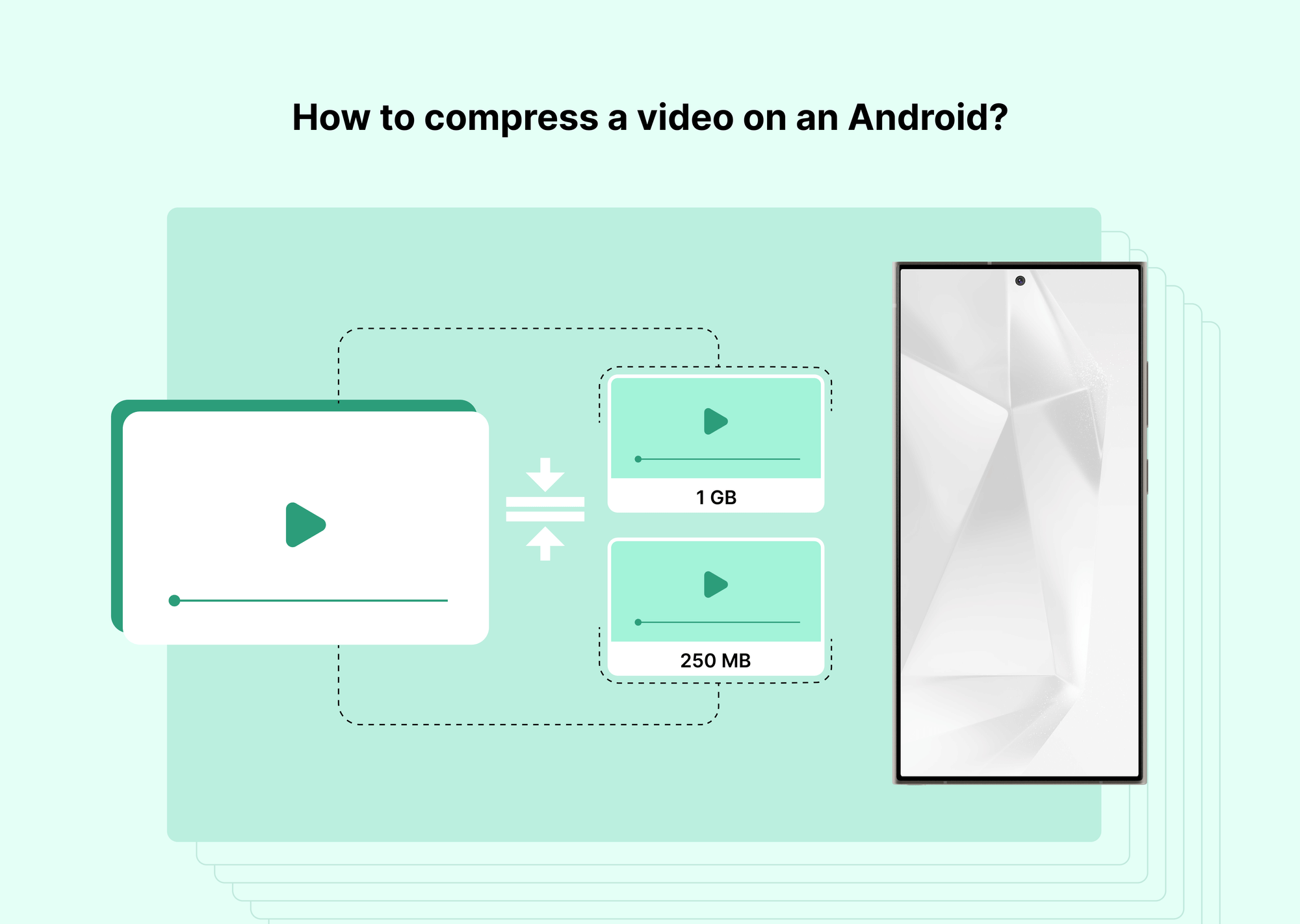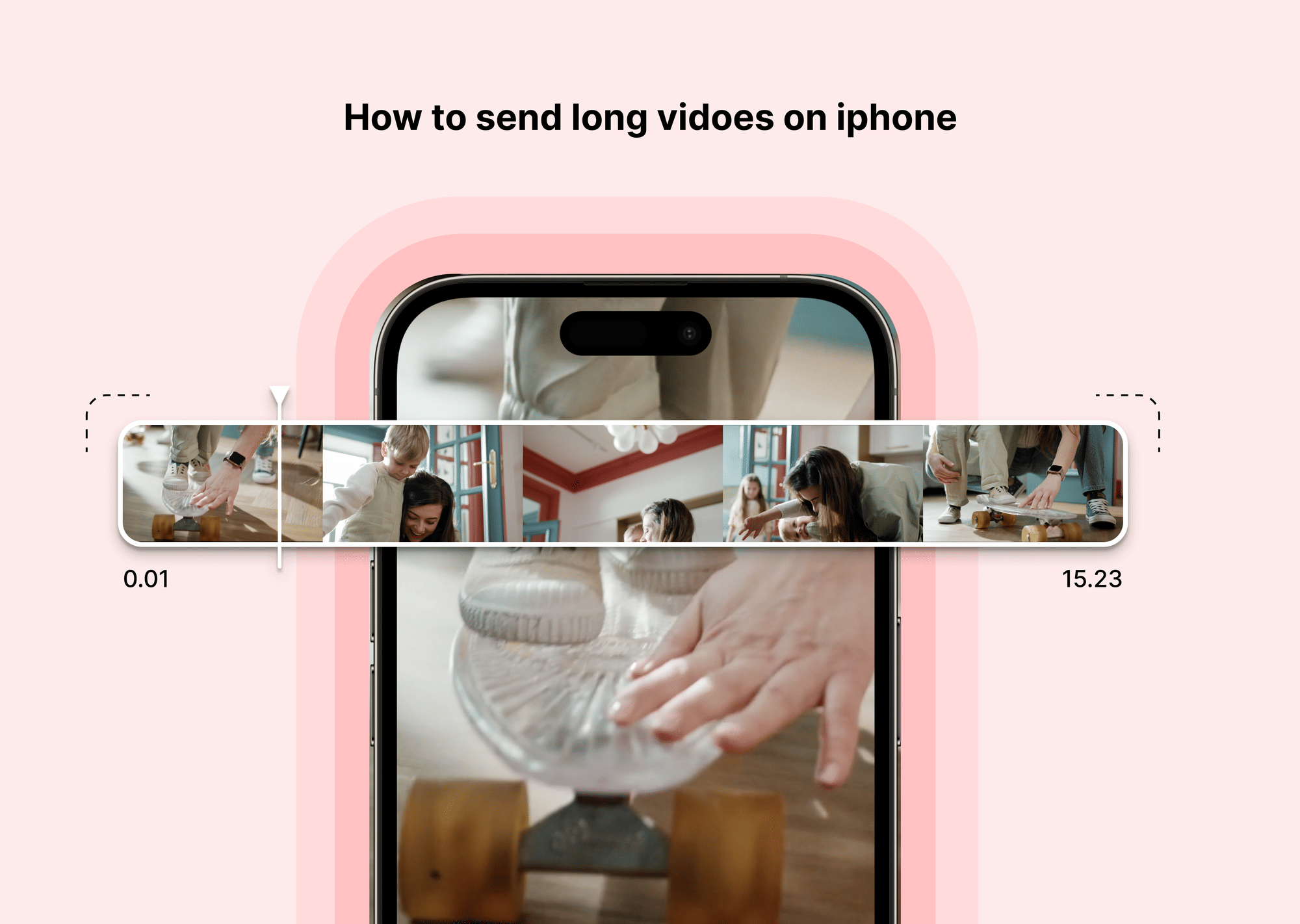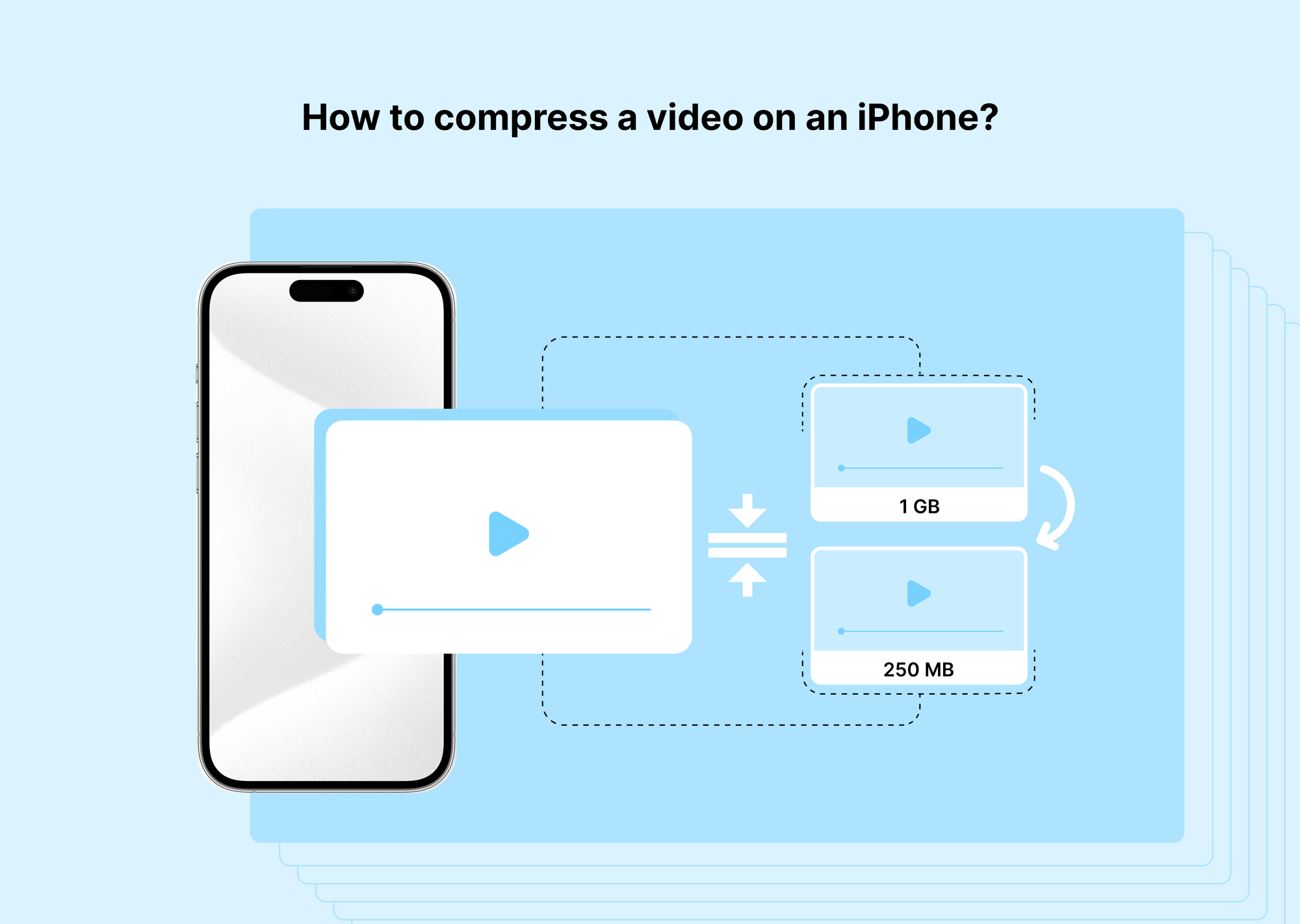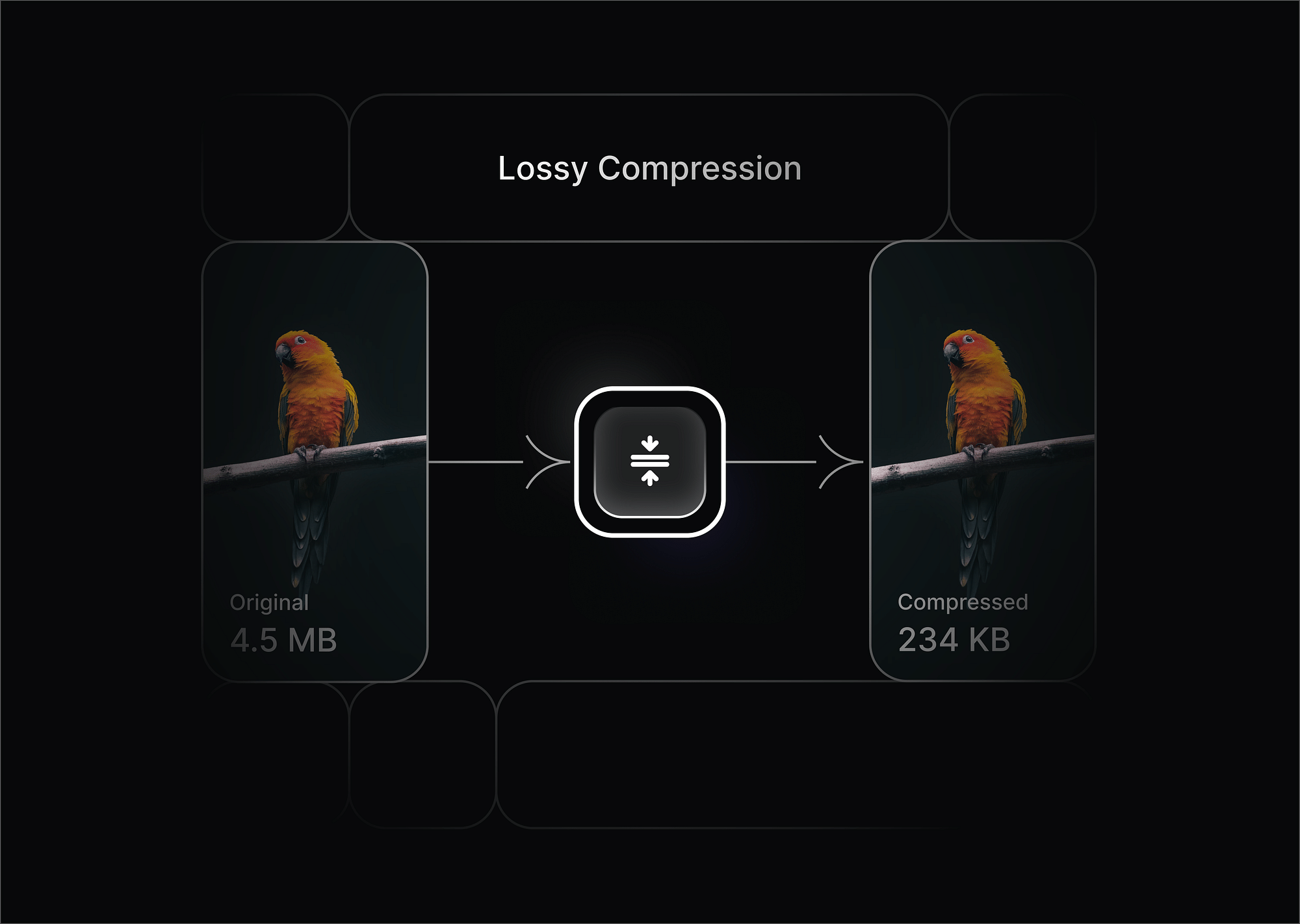In today’s mobile-first world, how to compress a video on Android has become a highly practical skill. With HD recordings, 4K videos, and long footage taking up massive amounts of space, knowing how to compress video can save you storage, speed up sharing, and make your mobile experience much smoother.
While this article focuses mainly on Android devices, it’s worth noting that some of the recommended apps also support iPhone, making them versatile tools across platforms. Let’s dive into the best built-in and third-party methods for compressing video files effectively.
Why Compressing Videos on Android Matters
Smartphone cameras today are nothing short of remarkable — they capture ultra-high-definition (HD) and 4K videos, slow-motion shots, cinematic effects, and vibrant details that were once only possible with professional cameras. But all this comes with a cost: huge file sizes.
To give you perspective, a short 30-second 4K video can easily consume 300–500 MB or more of storage space. Multiply that by a few videos, and suddenly your phone’s internal storage or SD card is full, your gallery takes forever to load, and your apps start throwing out “low storage” warnings. This isn’t just an inconvenience — it affects your overall device performance, making everything slower.
Compressing video files on Android solves several significant problems:
Save Internal Storage or SD Card Space
By reducing file sizes, you free up valuable space on your device for more photos, apps, music, and other content. You also reduce the need to constantly move files to external storage or cloud backups to keep your phone running smoothly.
Share Large Videos Faster via WhatsApp, Email, or Social Media
Many platforms (especially WhatsApp and email) place strict size limits on attachments — often just 16 MB for WhatsApp videos and ~25 MB for email attachments. Without compression, your favorite vacation clip or funny moment might simply be too large to send. Compressing it makes sharing effortless and avoids failed uploads.
Meet Size Limits for Uploads or Attachments
Whether you’re uploading to social media, YouTube, a cloud drive, or work tools, there’s often a cap on how large a file you can upload. Compressing lets you stay under these limits without needing to split your video into parts or downgrade the quality too drastically.
Reduce Data Usage When Sending Over Mobile Networks
Sending large files over 4G/5G can quickly consume data, which can be costly if you’re on a limited data plan. Compressing videos significantly reduces the amount of data required for transfer, saving both time and money.
Improve Device and App Performance
Beyond just saving space, reducing file sizes improves the smoothness of your gallery, cloud backups, and editing apps. Large files take longer to open, index, and sync — compression makes everything lighter and faster.
And the best part? You don’t need advanced tech skills to pull this off — no need to fiddle with complex settings or expensive software. With the right tools (many of which are free), anyone can compress videos on Android quickly and easily, reclaiming space and improving their device's performance.
How to Compress a Video on Android (Built-in Methods)
Using Samsung Gallery to Edit and Reduce Resolution
If you own a Samsung device, the native Gallery app has an easy way to reduce video resolution, which in turn compresses the video size:
- Open the Gallery app and select the video you want to compress.
- Tap the Edit (pencil icon) at the bottom.
- Choose the Trim or Resolution options.
- Select a lower resolution (e.g., switch from 4K to 1080p or 720p).
- Save the edited video.
This method ensures that you compress video without significantly losing quality, keeping important details intact while reducing the file size.
Using Link Sharing Compression (Samsung Feature)
Samsung’s Link Sharing feature automatically compresses large videos for easier sharing:
- Go to Share > Link Sharing when selecting a video.
- The system uploads the file to Samsung’s cloud, reduces its size, and generates a shareable link.
This not only saves space but also avoids sending bulky files directly, making it ideal for quick, casual sharing.
Best Apps to Compress Videos on Android
When built-in tools fall short or you need more customization, third-party apps come to the rescue. These apps aren’t just powerful — they’re designed for everyday users, offering intuitive interfaces, flexible features, and reliable performance. Below is a deeper look at some of the best video compressor apps on Android, helping you choose the right one for your needs.
Panda - Video Compressor
Panda is one of the most popular apps for compressing videos on Android, primarily due to its user-friendly and straightforward interface. You can choose from preset compression options or customize your own, making it easy whether you’re a beginner or a power user.
Key Features:
- Compress videos to save space or fit under size limits (like for email attachments)
- Batch compression to handle multiple files at once
- Supports various formats, including MP4, AVI, and MOV
- Simple slider to adjust size/quality balance
Pros: Very beginner-friendly. Batch support saves time. Maintains good video quality even after compression
Cons: Some advanced features (like ultra-high compression) require a paid upgrade. Limited editing or trimming tools — this is a pure compressor
CapCut
While CapCut is known mostly as a video editing app, it also includes robust compression features. This is ideal for people who want to both edit and resize videos before sharing on platforms like TikTok, Instagram, or YouTube.
Key Features:
- Complete video editing suite: cut, trim, add music, filters, and text
- Export videos at reduced sizes or lower resolutions
- Great for social media creators needing trendy edits + compression
Pros:All-in-one editing and compressionStylish filters and effects built-inCross-platform: also available on iPhone
Cons:
Can feel too heavy if you want compression — better suited for creators. Slightly longer learning curve compared to single-purpose compressors
Video Compressor - Reduce Size
This app focuses on targeted compression, allowing you to specify the exact file size you want (e.g., compressing a video to 10MB) or adjust the bitrate and resolution manually. It’s convenient when you need your video to meet specific upload or sharing requirements.
Key Features:
- Direct input for target size or bitrate
- Supports major formats like MP4
- Allows preview before saving
Pros: Gives you precise control over output. Simple and practical interface. Suitable for people needing size-specific results
Cons: Free version contains ads. The interface may feel basic to some users
Smart Video Compressor Resizer
As its name suggests, this app offers a smart balance between easy-to-use controls and customizable settings. You can compress videos based on resolution, bitrate, or both, and it supports a variety of video types.
Key Features:
- Flexible compression settings (bitrate, resolution)
- User-friendly dashboard
- Fast performance for small- to medium-sized files
Pros: Excellent balance between ease and control. Clean, no-nonsense interface. Handles standard formats smoothly
Cons: Occasional slowdowns occur with large files. Limited batch processing
Compress Video Size Compressor
This app focuses on compression presets designed specifically for various sharing scenarios, including social media, email, and cloud uploads. It’s ideal if you don’t want to fiddle with manual settings and need a quick, one-tap solution.
Key Features:
- Predefined presets for WhatsApp, Instagram, email, etc.
- Quick compression mode
- Minimalist interface for fast actions
Pros: Super easy to use, excellent for casual users. Convenient social media presets. Lightweight app
Cons: Doesn’t offer much in terms of manual fine-tuning. Limited additional features beyond compression
Video Compressor: MP Compress
One of the most widely used Android video compressors, MP Compress combines compression with format conversion, making it a versatile tool for those working across platforms or devices.
Key Features:
- Compress videos by setting the target size or quality
- Convert between formats (e.g., from MOV to MP4)
- Offers batch conversion and compression
Pros: Dual functionality (compression + conversion), Lots of free features, Works well with different file formats
Cons: Interface feels a bit outdated
Some advanced features may require a learning curve
Video Compressor MP3 Converter
This hybrid app stands out because it not only compresses video files but also lets you extract their audio tracks as MP3 files — handy if you want to save just the audio from a video.
Key Features:
- Video compression with size or resolution adjustments
- Extract MP3 audio from videos
- Flexible format support (MP4, AVI, MKV, etc.)
Pros: Combines video and audio tools in one app. Easy-to-navigate layout, supports many file types
Cons: Occasionally unstable, especially on older devices. Compression speed can vary
Video Compress
If you’re looking for a no-frills, straightforward tool, Video Compress is a lightweight app designed purely for trimming and compressing video files. It doesn’t offer advanced editing, but it’s perfect for quick tasks.
Key Features:
- Basic trimming and compression
- Simple slider controls
- Fast compression process for small videos
Pros: Very lightweight and easy to install. No unnecessary extras — pure compression. Fast performance for basic tasks
Cons: Lacks advanced controls or settings, batch support, or format conversion
Tips for Compressing Videos Without Losing Quality
When learning how to compress a video on Android, one of the biggest concerns people have is: Will my video look blurry or pixelated afterward? The good news is, you can significantly reduce video file sizes without sacrificing noticeable quality — as long as you follow the right approach. Here’s how to do it smartly:
Choose the Right Resolution
The most effective way to shrink file size is to lower the video resolution — but you need to do this wisely. Dropping a video from 4K (3840×2160) to 1080p (1920×1080) can reduce the file size by more than half; yet, most users won’t notice a significant visual difference when watching on mobile screens. Similarly, dropping from 1080p to 720p still provides clear visuals while reducing the file size, allowing you to manually set the bitrate, giving you control over the balance between quality and file size.
Tip: If your video is meant for sharing on social media or messaging apps, 720p is often more than sufficient. For larger displays (like smart TVs), stick with 1080p if you want to keep crisp quality.
Pick the Right Bitrate
Bitrate refers to how much data is used per second of video — and it’s just as important as resolution. A higher bitrate means better quality, but also much larger file sizes. Many compression apps allow you to manually set the bitrate, giving you control over the balance between quality and file size.
Tip: For casual viewing or sharing, you can often cut the bitrate in half without a major visual difference. However, if your video contains a lot of fast motion (such as sports or action footage), avoid setting the bitrate too low, as this can result in noticeable artifacts and blurring.
Avoid Multiple Compressions
One of the easiest mistakes to make is compressing a file, saving it, and then compressing it again later — this stacks compression artifacts, gradually degrading the video’s clarity and sharpness.
Tip: Always keep an original, high-quality copy of your video saved somewhere (even if it’s in cloud storage or an external drive). Use the original file anytime you need to create a new compressed version, rather than re-compressing an already compressed file.
Use Apps with Strong Compression Algorithms
Not all video compressors are created equal — some apps use better, smarter algorithms that preserve visual quality even at lower file sizes. Apps like Panda Video Compressor or Smart Video Compressor Resizer are well-reviewed for striking a good balance between small file sizes and crisp visuals, while some lesser-known or older apps may cut corners, resulting in poor quality.
Tip:Check user reviews and test a short clip first to see how the app handles compression before you run it on your important videos.
How to Share Compressed Videos from Android
Once your video is compressed, you can share it easily:
- WhatsApp or Telegram: Send videos directly or upload to a cloud and share a link.
- Email: Keep in mind most email services limit attachments to ~25MB, so compress video for email if needed.
- Social Media: Upload to Instagram, TikTok, or Facebook faster thanks to smaller files.
- Cloud services: Utilize Google Drive, Dropbox, or OneDrive for sharing large files or backing up data.
By compressing beforehand, you avoid slow uploads and enhance the viewing experience for others.
Final Thoughts
Learning how to compress a video on Android unlocks a world of convenience, including more space on your phone, easier sharing, and smoother social media use. Whether you rely on built-in tools like Samsung’s Gallery or explore top-rated apps like Panda, CapCut, or Smart Video Compressor, there’s a method for every user.
Start experimenting today — you’ll be surprised how much space and time you can save.
FAQs
How to compress a video on Android without losing quality?
Use apps like Panda or Smart Video Compressor, which offer advanced control over resolution and bitrate.
Can I compress videos on Android for free?
Yes! Most apps, including Panda, CapCut, and Video Compressor, offer free versions.
Do these video compressor apps work on iPhone?
Many of them, like CapCut and Panda, also have iOS versions, allowing you to compress videos on an iPhone similarly.
How to compress a video for email on Android?
Target your compression to below ~25MB, the typical attachment limit, using apps that allow you to set file size.
Why compress a video?
To save space, speed up sharing, meet upload limits, and reduce data consumption.
What is the best app to compress videos on Android?
Panda Video Compressor is generally regarded as the best video compression app for Android— thanks to its speed, user-friendliness, and ability to handle a wide range of video formats efficiently.




